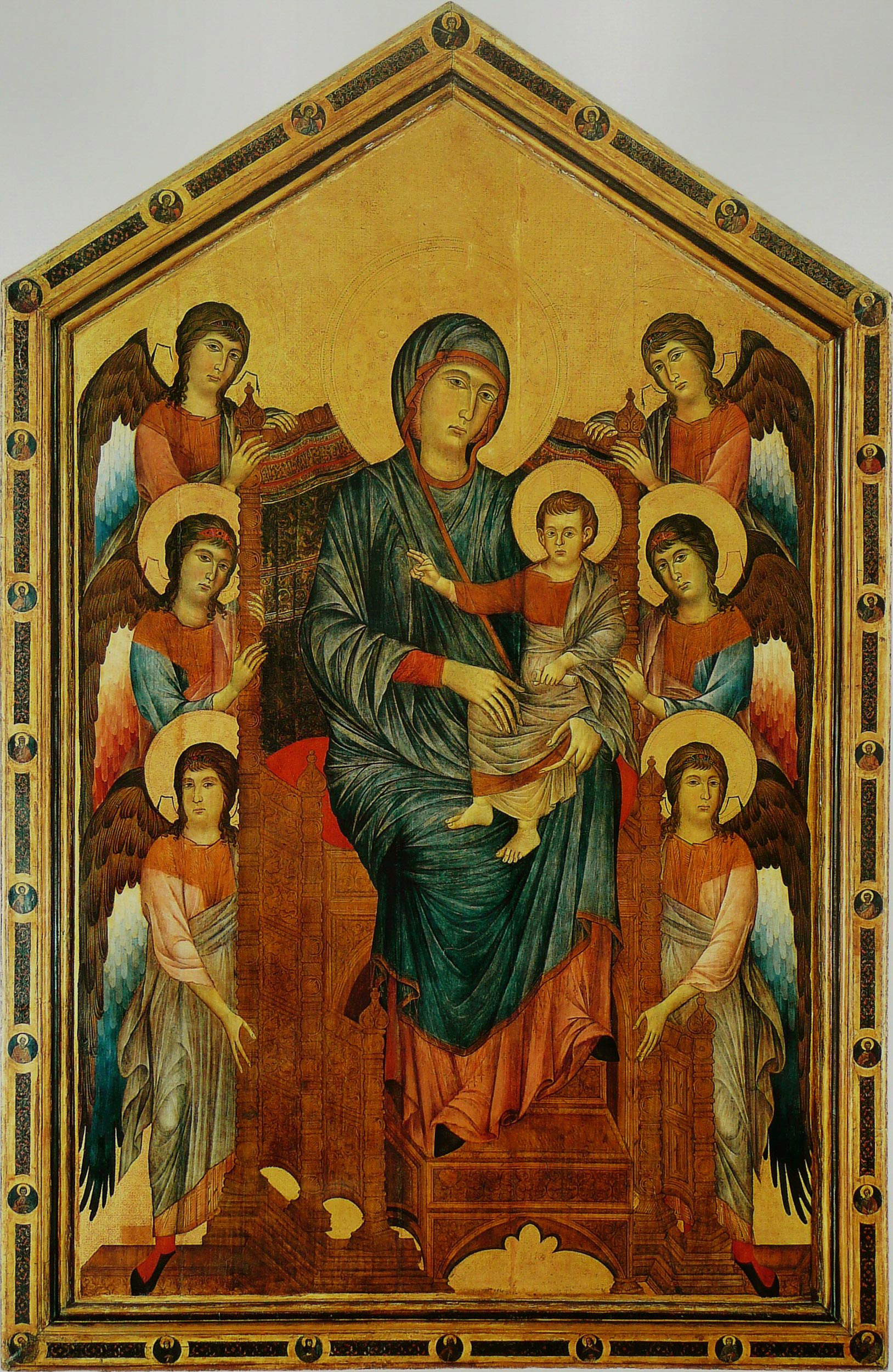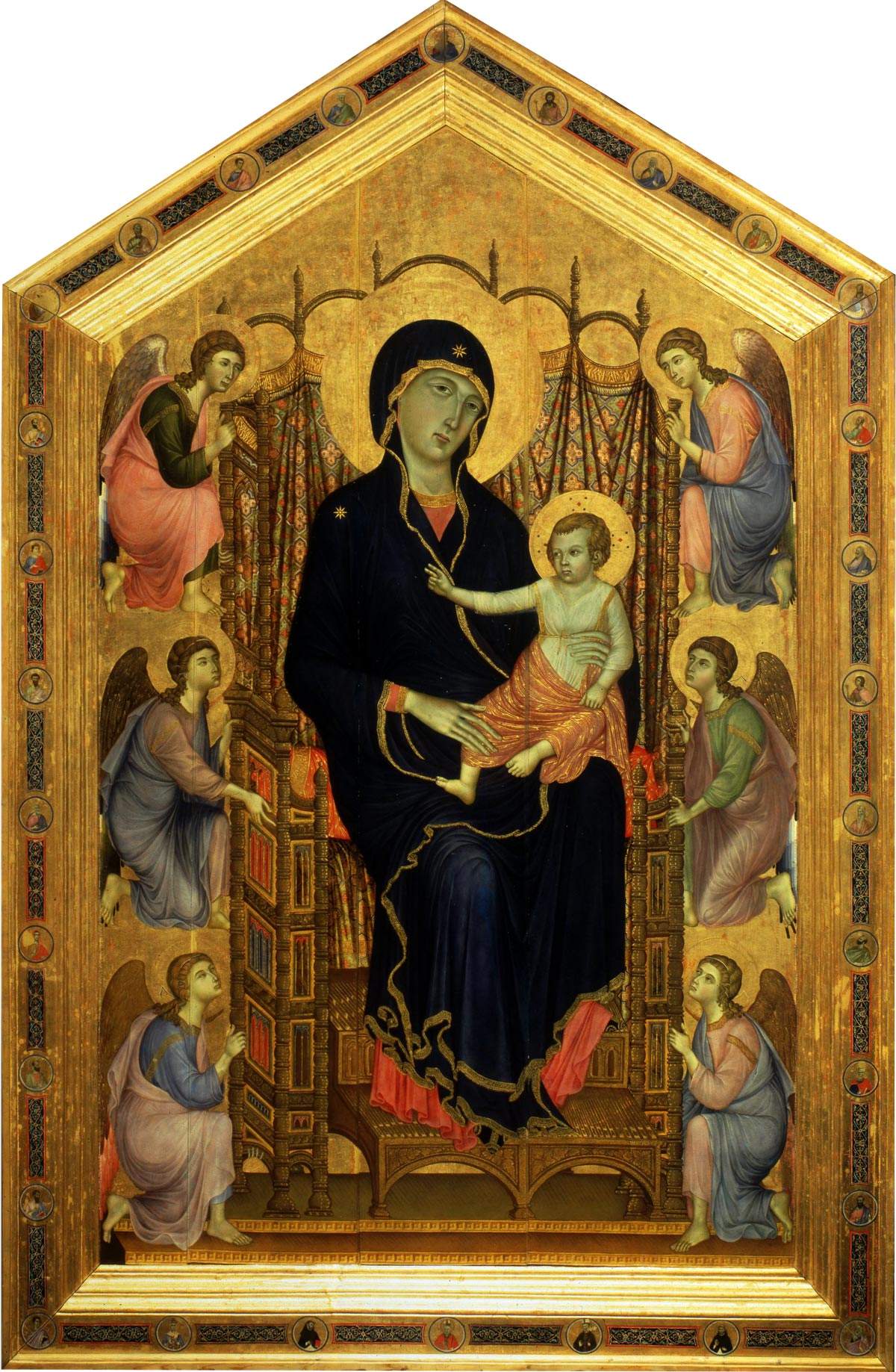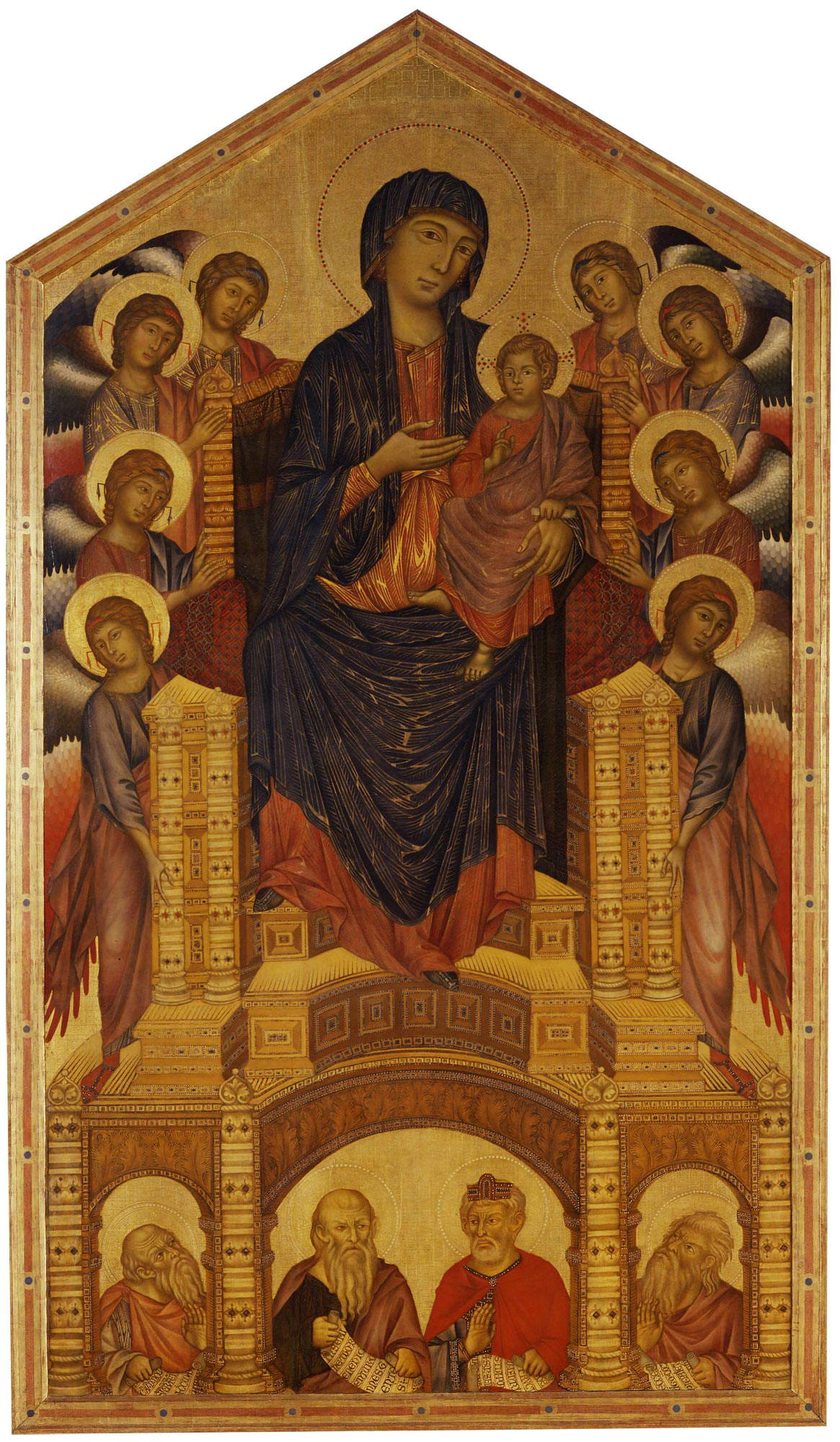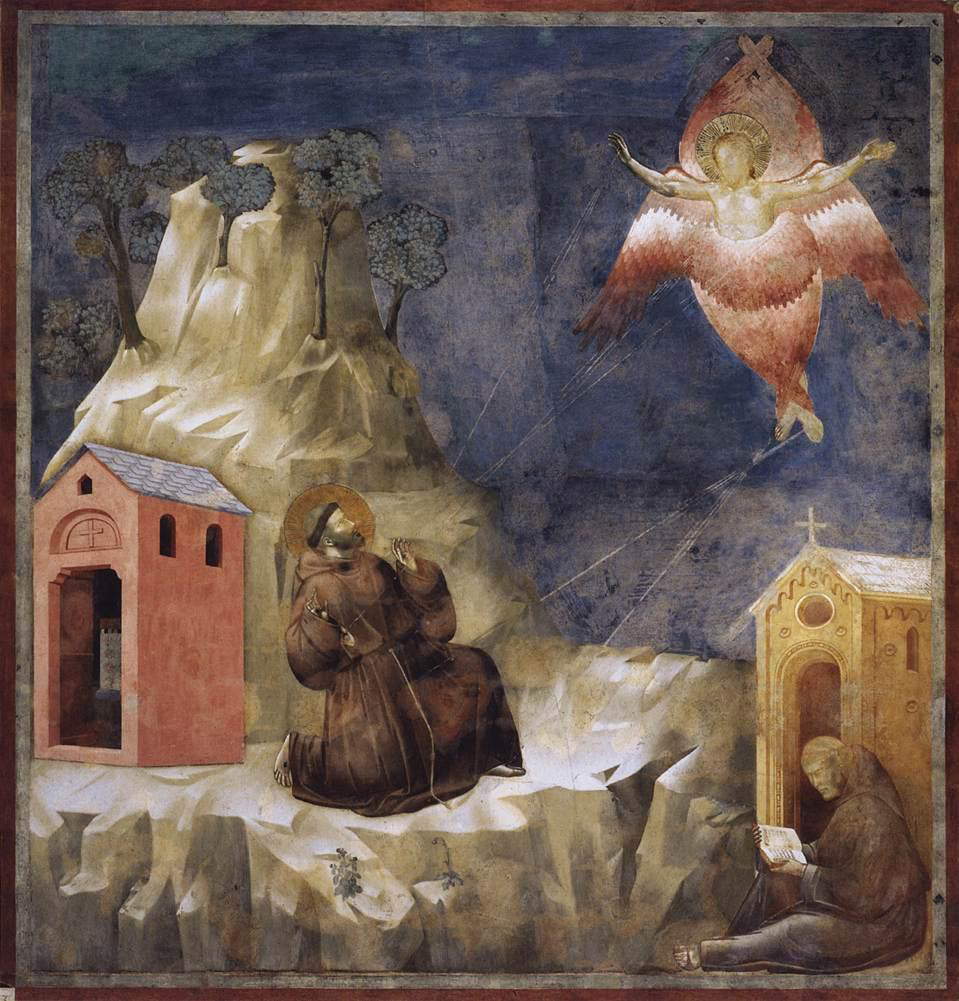When Giotto and Cimabue were in Pisa. The church of San Francesco
In 2015 ago the church of St. Francis in Pisa, the second largest in the Tuscan city after the monumental cathedral, was closed due to a partial roof collapse that compromised the safety of the holy place. Then, in the last months of 2023, the Superintendence of Pisa published the call for tenders to entrust the restoration works, for an amount of around 5 million euros, interventions that should be completed in 750 days. The hope of all culture lovers, certainly not only those from Pisa, is to be able to return once again to a place so important for national artistic events: it is not by chance that the temple has been declared a National Monument. In its centuries-long history, the Pisan church has housed several masterpieces by the most bombastic names in the history of Italian art, treasures that in part are still preserved there, although some of the most important ones are now in other museums.
The origins of this temple go back to antiquity, lost in legend and linked to the figure of St. Francis of Assisi, who, according to popular tradition, was in Pisa in 1211, just two years after Pope Innocent III approved the Order. The first certain evidence of a church dedicated to St. Francis dates back to 1233 when a city official purchased some land for use as a vegetable garden on behalf of the friars. In less than thirty years the importance of the Order, which followed the rule of the Seraphic Order, had gained such prominence that in 1261 the decision was made to rebuild the church with decidedly larger dimensions. Linked to this building site, directing its work, was the extraordinary and mysterious figure of Giovanni di Simone, one of the most important architects of his time, known for his interventions in the Piazza dei Miracoli, which would see him involved in the construction of the Camposanto and also in the summit part of the famous Leaning Tower. According to the dictates set by the General Chapter of the Order, the church has simple and severe lines, with a single hall layout, nevertheless very large in size, measuring 70 by 18 meters. Work on the building took a long time: sixty years later the gabled vault was still unfinished, and the marble facade was not completed until 1603.
Over time the church, so important that it gave its name to the entire neighborhood in which it stands, has housed the tombs of some of Pisa’s most illustrious figures, including captains of the people, podestà, magistrates, professors such as Francesco Buti, one of the first commentators on the Divine Comedy, and members of the nobility, such as the Visconti and Della Gherardesca families.
Here, the remains of the famous Ugolino also found rest, albeit partial, as they were moved and relocated several times. Of the Della Gherardesca family, a sumptuous funerary monument, inspired by the model of Arrigo VII’s tomb that Tino da Camaino made for Pisa Cathedral, was also in the church. The glorious complex, sculpted by Lupo di Francesco, consisting of arches and pinnacles, the sarcophagus and statues, has been dismembered over the centuries and is now preserved partly in the Monumental Cemetery and partly in the National Museum of San Matteo.




Not surprisingly, given the importance of the church and its convent, great efforts were made over the centuries on its decorative apparatus, which involved some very important names. These include Spinello Aretino and Taddeo Gaddi, who created cycles of frescoes, now almost completely lost, the marble dossal by Tommaso Pisano, Niccolò di Pietro Gerini, Giunta Pisano with the historiated panel with St. Francis, and Barnaba da Modena with works now in the Museo di San Matteo, but later in time also Lodovico Cigoli, Ventura Salimbeni, Jacopo Chimenti known as l’Empoli, and Santi di Tito. This very long list of masterpieces, a good portion of which fortunately are still preserved in churches or museums in Pisa, seems only partial consolation when one considers that from here come two of the most celebrated works in the Louvre Museum today, one of the still open wounds of those spoliations perpetrated by Napoleon and Vivant Denon, the man charged with creating for the emperor the most extraordinary museum mankind had seen up to that time. These were Cimabue ’s Maestà and Giotto’s panel with the Stigmata of St. Francis, pivotal works and personalities in the stylistic evolution of Italian art that marked the transition from that “Greek-style” way of painting, that is, hinged on Byzantine models, to a new rediscovery of naturalism and laws of perspective.
It was Giorgio Vasari who carved out for Cimabue the role of the first artist to break away from the “Greek manner,” and indeed it was with the Florentine painter that he began his Lives. The inventor of the history of art did not forget to mention the Pisan work, mentioning how after distinguishing himself for the great Crucifix of Santa Croce, Cimabue was called to work in Pisa to make a panel with St. Francis; this annotation for a long time made Cimabue attribute to Cimabue the dossal now believed to be by Giunta Pisano. Continuing in his biography, Vasari writes: “For the same church made in a large panel, the image of our Woman with her child in her neck, and with many angels around her, albeit in a field of gold, she was after not long removed from where she was first placed, to make the marble altar, which is there at the present time; and placed inside the church beside the door, on the left hand. For which work he was much praised, et rewarded by the Pisans.” On the basis of Vasari’s indication, the work has since the nineteenth century been traced back to the hand of Cimabue by the vast majority of critics, who have instead lingered for a long time debating the dating. Today there is general agreement to date it to the last quarter of the 13th century, and specifically around 1280. This would in fact not only point to Cimabue as the great renewer of the Marian iconography of the Majesty, that is, the enthroned Madonna, but further the Pisan work would be the great prototype for so many of the later Majesties.
In the panel now in the Louvre, Mary is indeed seated on the throne with the child in her arms, surrounded by a host of angels, but Cimabue makes the scene far more real than what had been achieved up to that time: the seat on which the woman rests is placed three-quarter view in the search for an effect of depth based on a perspective that is still intuitive, but capable of making the space of the painting inhabitable. The rendering of the Madonna and Child, who seem to live on an overlapping plane with respect to that of the throne, moves further and further away from the Byzantine and medieval hieratic pose, and under the robes we begin to perceive the volumetries of the body, but without abandoning it altogether. The angels, with oriental-like hairstyles, are still arranged in a hierarchical perspective, and are placed around the throne in the search for rhythm and symmetry rather than in the illusionistic desire to render space. The features of the faces move toward an early search for naturalism and chiaroscuro, beginning to set aside the taste for a calligraphic stroke. Cimabue thus creates a work where the theophany is believable and true, and not an icon, in effect positing a fundamental renewal of the traditional figurative culture of the Madonna and Child. Just five years later Duccio di Buoninsegna would follow Cimabue’s example in the Rucellai Madonna by adding a certain search for the affections, while Cimabue in the Maestà di Santa Trinità would carry forward his own outcomes of plasticity.




This ambition of spatiality was pursued a few decades later, around 1310-1315 by Giotto, who, from the lesson of his master Cimabue, moved toward an ever deeper yearning for spatial dimension in the Maestà painted for the church of Ognissanti in Florence. Giotto’s is the other work, which, having left on convoys organized by the French, would never return to Italy. Vasari tells us of the panel as “held in much veneration for the memory of so great a man.” The work is a cusped panel in tempera on a gold ground with the subject of the Stigmata of St. Francis, and historiated at the bottom with scenes from the saint’s life.
The painting shows the saint of Assisi as he receives “ne l’orribile sasso della Vernia” the stigmata induced through rays of light emitted from the wounds of Christ in seraphim’s robes. Below, the accompanying predella shows The Dream of Innocent III, The Pope Confirming the Rule of the Order, and St. Francis Preaching to the Birds. Giottesque authorship has long been in doubt, although it is accompanied by the signature Opus Iocti florentini at the bottom of the frame. Art historian Luciano Bellosi, who had long advocated the work’s authorship, lamented how it was given little consideration, since “one of the most disconcerting aspects of Giotto studies is the fact that a singular commonplace has come to be established: that paintings signed by Giotto are not the work of Giotto.”
The Louvre panel, in fact, replicates a scene also found in a fresco in the Basilica of Assisi, although as is well known even the attribution of this cycle to Giotto has been repeatedly challenged. The two works, although they have remarkable tangencies, show some differences in style and layout according to scholars to be traced in the different date of execution and in the more or less active intervention of helpers. The one from Pisa is exhibited in the Louvre as later, proposing as its date the first quarter of the 14th century.
If doubts persist about autography and dating, no less are those about the genesis of this work. On the sides of the frame coats of arms were identified by Julian Garnerd as belonging to those of a Florentine family exiled in Pisa, perhaps the Ughi, while for Strehlke they are instead the emblems of the wealthy Pisan merchant family, the Cinquini.
In particular, this interpretation has been the most widely accepted in the past, prompting the creation of the altarpiece to place it in one of the two chapels of the left transept, where the insignia of the Pisan family still stand. In more recent times, it has instead been proposed that the work was designed to be placed hanging from one of the ceiling beams along with other paintings. Vasari saw the work arranged in a pillar next to the high altar in the church of San Francesco, where it remained until the suppression of the convent in 1786. It was later moved to the church of San Nicola in Pisa, and then spent a couple of years in storage at the Camposanto Monumentale. In 1813 it was instead chosen by Denon and transported to Paris.
The works of Giotto and Cimabue in Pisa are the most vivid testimony to the importance that the church of San Francesco must have had in the past and to the prestige of its patrons, who were able to secure the services of two, as well as numerous others, among the most important protagonists of their time.
Warning: the translation into English of the original Italian article was created using automatic tools. We undertake to review all articles, but we do not guarantee the total absence of inaccuracies in the translation due to the program. You can find the original by clicking on the ITA button. If you find any mistake,please contact us.




























